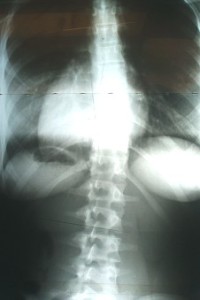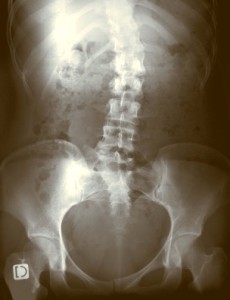Scoliosis is a condition, wherein the spine has an abnormal curvature. When one looks from the side, the spine may have a sideways curve, bending either forwards or backwards.
Most of the cases of scoliosis are mild. Severe cases of scoliosis can be extremely debilitating and may result in lack of space in the chest for the lungs thereby affecting their functionality.
Symptoms of mild scoliosis
Some of symptoms and signs of mild scoliosis are listed below:
- The waist is uneven or one hip may be higher than the other. One may notice this when he/she notices that the length of pants on one leg is longer than the other.
- The shoulders are uneven and one of the shoulder blades may be more visible or prominent in appearance than the other.
- In some cases of scoliosis, the spine may even turn or twist in addition to sideways movement. This may push the ribcage out, making one side of the ribcage more prominent or protruding. In addition, it may also result in heart and lung difficulties. This may lead to pain in the chest or shortness of breath
- Chronic back pain will be felt by individuals who have scoliosis.
- Some cases of scoliosis may cause or result in arthritis of the spine
- The head may appear to tilt or appear to be off center.
Causes of mild scoliosis
The symptoms and signs of scoliosis appear during the growth spurt that begins after reaching puberty. Girls are more prone to scoliosis and severe scoliosis than boys.
Most of the causes of scoliosis are idiopathic or unknown. However, some of the conditions and risk factors that may lead to scoliosis are mentioned below:
- Scoliosis has a genetic basis and runs in families. Hence a family history of scoliosis, places an individual at a greater risk to develop scoliosis.
- If the spinal bones do not form completely or do not separate from one another at the time of development of fetus, then it may lead to scoliosis.
- Individuals with disorders or conditions like cerebral palsy, muscular dystrophy, etc. are at greater risk to develop scoliosis. Such individuals have weak muscles that cannot hold them up in a straight position.
- If there are muscles tremors or spasms in the back or if one of the legs is shorter than the other, then it may lead to mild scoliosis
- The presence of spine tumors like osteoid osteoma may also lead to scoliosis
- Older adults may have weakened ligaments and arthritis of the spine which may lead to scoliosis
Treatment of mild scoliosis
Most cases of mild scoliosis do not require treatment. However, depending on several factors like gender, bone maturity, curve pattern, severity of the curve as well location of the curve, one may choose to undergo treatment with either braces or surgery after consulting with a doctor.
Braces do not cure scoliosis, but prevents further degeneration of the spinal curve. Braces can be worn in day and night and can be removed as and when required. Once the bones stop growing, the use of braces is discontinued.
Surgery is used to reduce and correct the severity of the spine and stop further degeneration of the spine.
If one of the legs is shorter than the other, then that deformity can be treated to prevent progression of the abnormality in the spine.
• In cases of scoliosis which causes severe back pain, massages, exercises and yoga is advised to strengthen the muscles and alleviate the pain.
Mild Scoliosis Pictures


